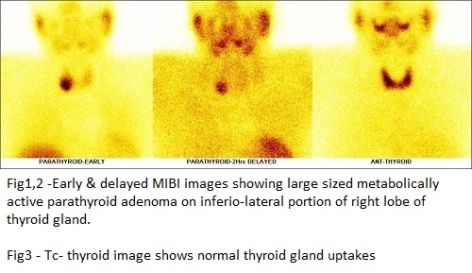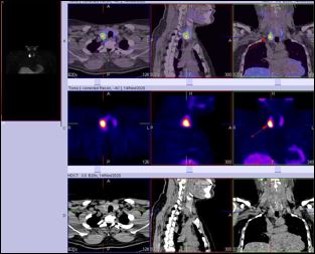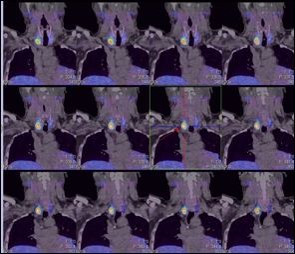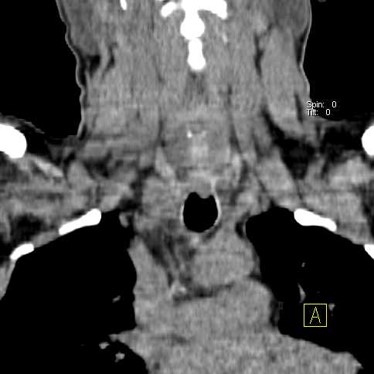CASES OF THE WEEK – “Case of primary hyperparathyroidism with minimal symptoms & maximum findings” by Dr ShekharShikare, Consultant & HOD, Nuclear Medicine

Case of primary hyperparathyroidism with minimal symptoms & maximum findings (unusual case):
Hyperparathyroidism is when your parathyroid glands create too much parathyroid hormone in the bloodstream. Two types of hyperparathyroidism exist. In primary hyperparathyroidism, an enlargement of one or more of the parathyroid glands causes overproduction of the hormone. This causes high calcium levels in the blood, which can cause a variety of health problems. Surgery is the most common treatment for primary hyperparathyroidism.
Secondary hyperparathyroidism occurs due to another disease that first causes low calcium levels in the body. Over time, increased parathyroid hormone levels occur.
Symptoms
Hyperparathyroidism is often diagnosed before signs or symptoms of the disorder are apparent. When symptoms do occur, they're the result of damage or dysfunction in other organs or tissues due to high calcium levels in the blood and urine or too little calcium in bones.
Symptoms may be so mild and nonspecific that they don't seem related to parathyroid function, or they may be severe. The range of signs and symptoms include:
- Osteoporosis
- Kidney stones
- Excessive urination
- Abdominal pain
- Tiring easily or weakness
- Depression or forgetfulness
- Bone and joint pain
- Frequent complaints of illness with no apparent cause
- Nausea, vomiting or loss of appetite
Case
41 years old gentleman short duration history of fatigue, tiredness, polyuria & occasional headaches. Recent history of small renal stone at VUJ with minimal pain, which has subsequently passed out with medical management.
BIOCHEMISTRY
PTH 208.9 pg /mL (15.0-683.3), Sr calcium 13.1mg/dL (8.8-10.6), Sr phosphorus 2.6 mg/dL (2.5-4.5), Sr Creatinine 82 mg/dL (20-320) & high calcium creatinine ratio.
USG KUB
Mild hydronephrosis and hydroureter right side and enlarged prostate.
CT ABDOMEN W/O CONTRAST
Both the kidney is normal in size, axis, outline and position. Both the kidney shows normal thickness and density of their renal parenchyma. No calculi seen on either side within renal outlines. Slight prominence of right sided renal calyces, renal pelvis and right ureter noted with latter seen extending up to the bladder base, where there is small density measuring 0.3 cms, which may represent calculus impacted at UVJ projecting into bladder lumen.
USG THYROID
Hypoechoic lesion on the right side along with there are multiple thyroid nodules.
Referred for 99mTc SESTAMIBI PARATHYROID SCITIGRAPHY
99mTc-MIBI PARATHYROID IMAGES (Dual isotope technique)
EARLY AND DELAYED MIBI IMAGES OF NECK AND CHEST
It shows focal area of increased MIBI tracer uptakes (approximately 27*29 mm in size) seen inferio-lateral portion of the right lobe of thyroid gland ( Better appreciated in SPECT-CT fused images) and persistent tracer retention in the same region on delayed washout images.
Rest of the thyroid gland shows decreased tracer uptakes on early images and adequate washout pattern on delayed images.
No focal area of any abnormal tracer uptakes seen in mediastinal region.
99mTc-THYROID IMAGES
The right lobe measures 4.7*2.1 cms in size and left lobe 4.0*2.1 cms in size approximately and shows fairly unif0rm tracer uptakes.
CONCLUSION
THERE IS LARGE SIZED FOCAL METABOLICALLY ACTIVE PARATHYROID ADENOMA (approximately 27*29 mm in size) SEEN INFERIO-LATERAL PORTION OF THE RIGHT LOBE OF THYROID GLAND AND IT IS EXTRATHYROIDAL IN NATURE.
Complications
Complications of hyperparathyroidism are mainly related to the long-term effect of too little calcium in your bones and too much calcium in your bloodstream. Common complications include:
Osteoporosis. The loss of calcium often results in weak, brittle bones that fracture easily (osteoporosis).
Kidney stones. Too much calcium in your blood may lead to too much calcium in your urine, which can cause small, hard deposits of calcium and other substances to form in your kidneys. A kidney stone usually causes major pain as it passes through the urinary tract.
Cardiovascular disease. Although the exact cause-and-effect link is unclear, high calcium levels are associated with cardiovascular conditions, such as high blood pressure and certain types of heart disease.
Neonatal hypoparathyroidism. Severe, untreated hyperparathyroidism in pregnant women may cause dangerously low levels of calcium in newborns.
CASE OF PRIMARY HYPERPARATHYROIDISM WITH MINIMAL SYMTOMS & MAXIMUM FINDINGS (UNUSUAL CASE).


Fig 3,4 - Early MIBI SPECT CT FUSED images showing large sized metabolically active parathyroid adenoma (approximately 27*29 mm in size) on inferio-lateral portion of right lobe of thyroid gland and extrathyroidal in nature (as shown with arrows)

Fig 5 - Coronal CT images shows mass lesion in inferio-lateral portion of right lobe of thyroid gland



